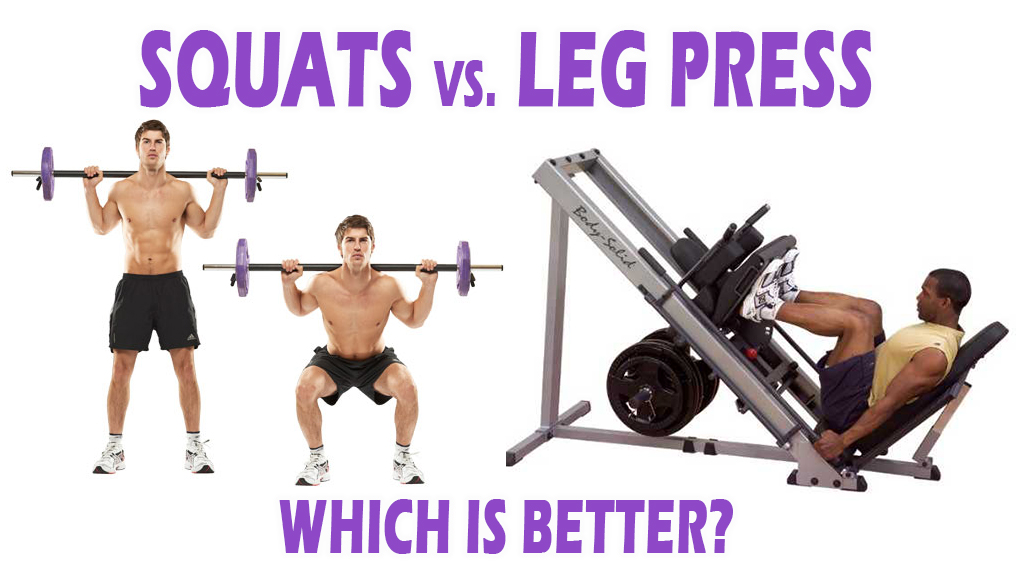
The squat is seen by many as the king of all exercises, requiring many large muscle groups (especially in the lower body) to execute the lift, as well as being taxing on the cardiovascular system as the repetition range is increased. The primary muscles responsible for the lift are those which compose the quadriceps, hamstrings and buttocks. The calf’s and core also play major roles during the lift to help stabilise the body. The leg press has a similar movement to the squat, yet is performed in a seated position, leaving the lower body to take most of the brunt, whilst the upper body and core receive much less stress than when performing the squat.
How to perform the squat and the leg press
Squat
- Load racked barbell with a suitable weight.
- Stand under the bar, with feet shoulder width apart, torso erect, back straight and chest up.
- Extend at the knee to un-rack the barbell and then take a stride backward to find adequate space to perform the squat.
- The movement begins with the knees and hips flexing as you descend, whilst the torso remains erect with the chest up. The knees should not travel further than level with your toes.
- Descend until the thighs are parallel with the floor, and then reverse the movement by pushing through the floor to drive the weight up.
- Repeat for the desired number of repetitions.
- Re-rack the weight.
Leg press
- Ensure the safety catches are on, and then load leg press machine with a suitable weight.
- Sit in the padded seat, with the back fully supported by the back board.
- Place your feet on the metal plate, shoulder width apart. Extend the knees so the safety catches can be turned so the sledge can travel down the rails.
- The movement begins with the knees and hips flexing as the sledge descends.
- The sledge should be brought down until the thighs and lower leg are at right angles. Reverse the movement by pressing through the mental plate to push the sledge back up the starting position.
- Repeat for the desired number of repetitions.
- Place the safety catches back on.
- ALLWAYS READ THE MACHINES INSTRUCTIONS FIRST (as some vary).
Who may benefit from the squat?
Anyone who does not have an underlying issue as to why they cannot perform the squat should. The squat is an excellent all round exercise, especially for the lower body. Bodybuilders, strength athletes, strongmen, sports people and casual gym goers can all benefit from the squat. The repetition range chosen for the exercise will impact the progression, so a trainee should chose a repetition range suitable for their goals(s):
Bodybuilding: 8-15 repetitions
Strength: 1-6 repetitions
Sports: Mixture – cycle the repetitions range
Casual gym goer: 8-20 repetitions
More repetitions can be performed, with this being more taxing on the cardiovascular system.
Who may benefit from the leg press?
If it was a clear cut choice between the squat and the leg press, the squat would likely be the favoured choice. The squat stimulates more muscles, with the torso having to remain stabilised throughout the movement, whereas the upper body is supported during the leg press. The supportive nature of the leg press can also be its advantage as well as its disadvantage, however. Those with upper body niggles and minor injuries may be able to perform the leg press as there is little stress placed on the torso.
If a trainee can perform both exercises then a mixture of the two would be ideal. The squat could be used as the primary leg exercise for a 6-8 week period, and then swapped for the leg press. This avoids stagnation and supplies a different stress to the muscle tissue to continue progression.